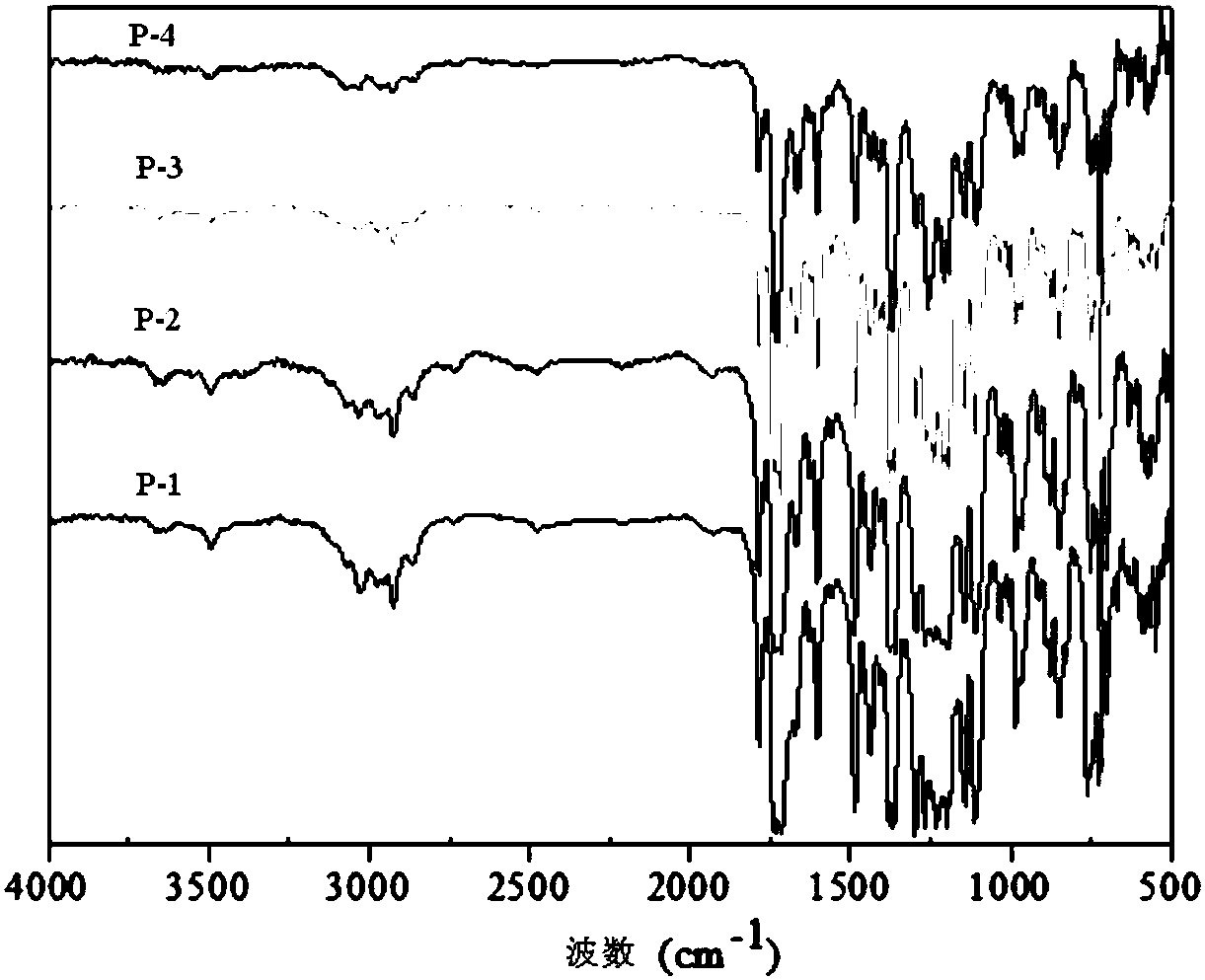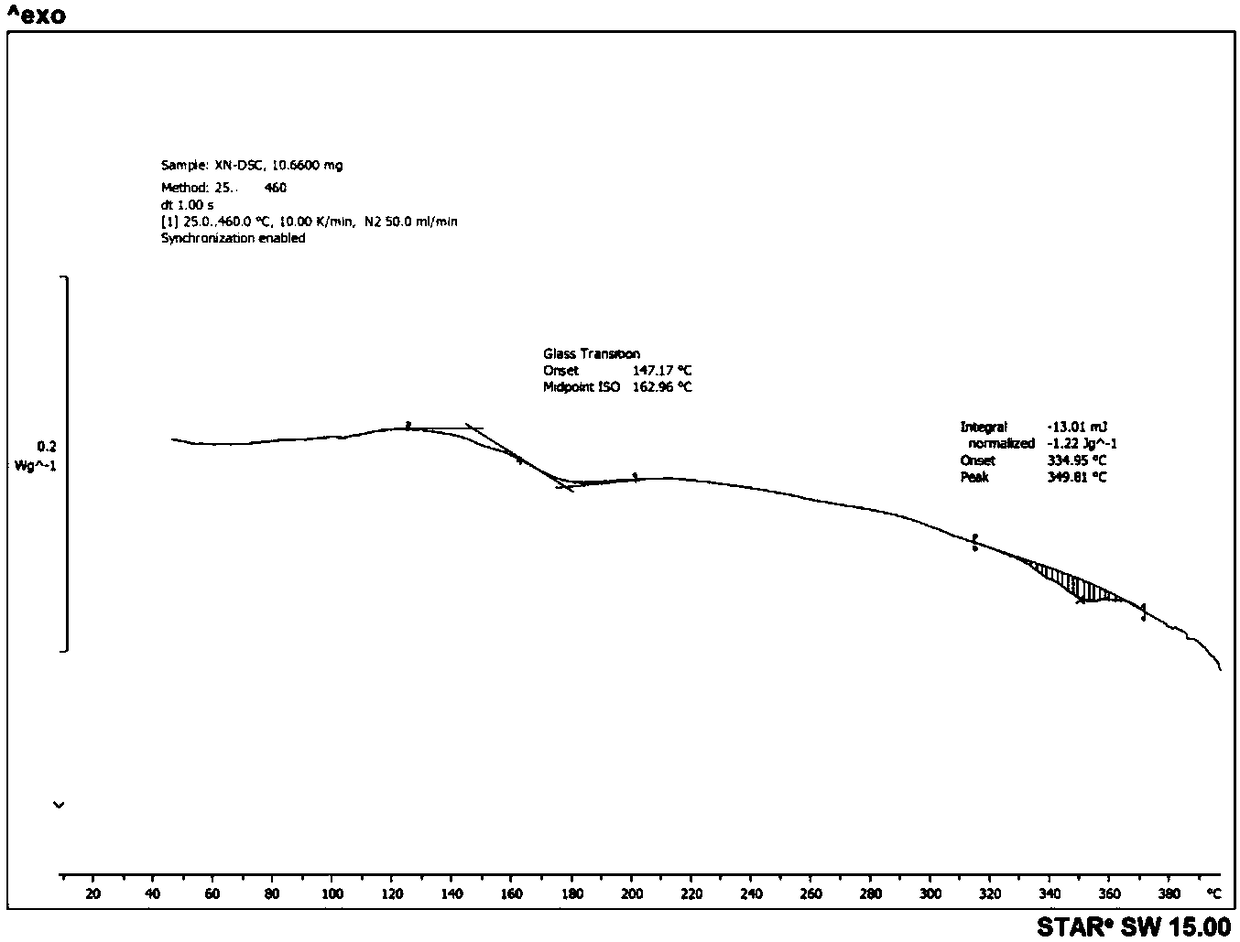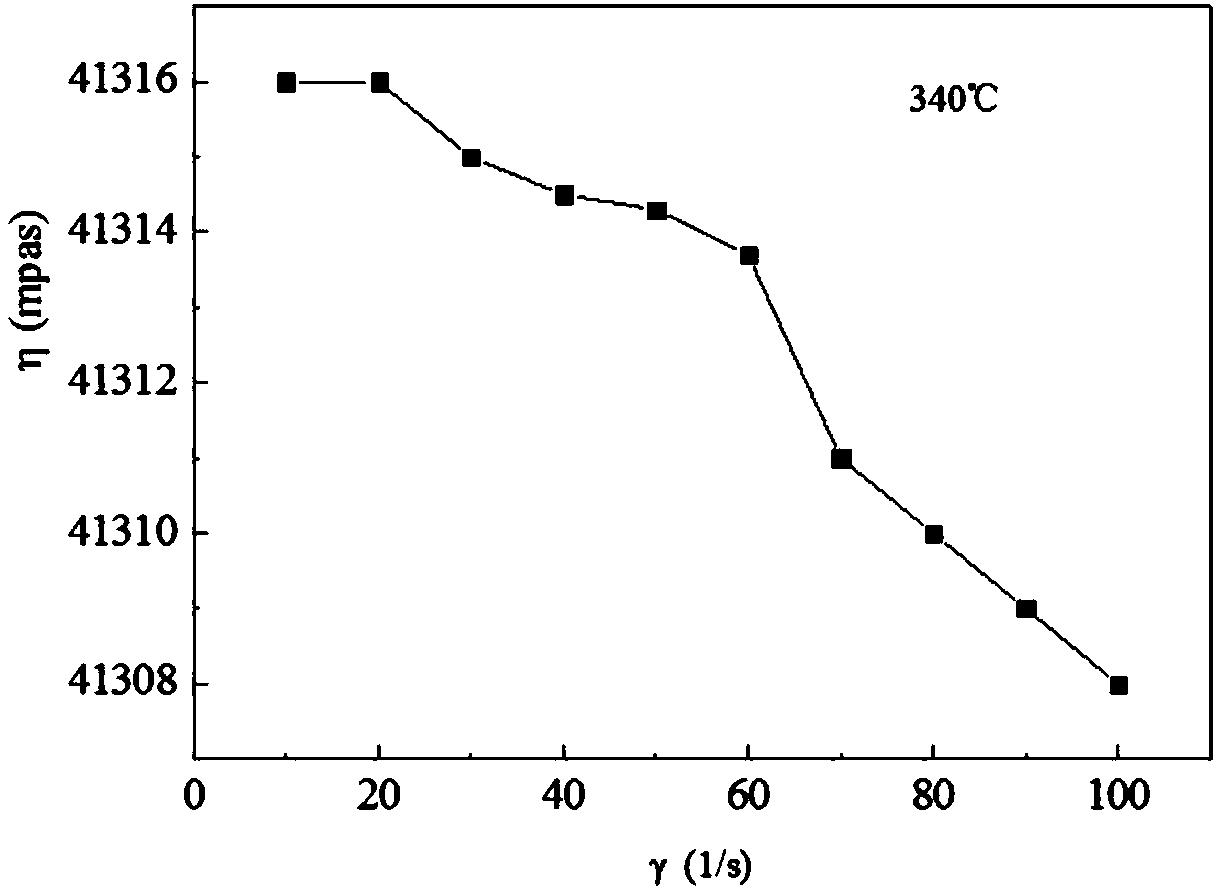Hyperbranched structured polyimide resin applied to 3D printing industry, and preparation method thereof
A polyimide resin and 3D printing technology, applied in the direction of additive processing, etc., can solve the problems of reduced processing performance, poor mechanical properties of PLA, low strength, etc., and achieve low melt viscosity, good solubility, and excellent film formation sexual effect
- Summary
- Abstract
- Description
- Claims
- Application Information
AI Technical Summary
Problems solved by technology
Method used
Image
Examples
Embodiment 1
[0037] Add 100mL of solvent N,N-dimethylacetamide into a dry and clean glass bottle, pass through nitrogen for protection, then add 3.42g of 1,5-(4-amino)phenoxynaphthalene (10mmol), and wait until it is completely dissolved , slowly added 2.82g of 1,3,5-tris(4-phenoxydiacid)mellitic anhydride (5mmol) in batches, heated to 40 degrees to accelerate the initiation of the reaction, and kept stirring for 12 hours, then added 0.74g ortho Phthalic anhydride (5 mmol) was capped, and after stirring for 12 hours, an imidization reagent, acetic anhydride, and triethylamine in excess of the molar number of amino groups were added, and nitrogen protection was maintained, and stirring was continued at room temperature for 10 hours. The obtained polymer solution was precipitated into acetone, stirred and washed, and dried in a vacuum oven for 6 hours to obtain a phthalic anhydride-terminated amino-terminated hyperbranched polymer P-1.
Embodiment 2
[0039] Add 100mL solvent N,N-dimethylacetamide to a dry and clean glass bottle, nitrogen protection, then add 5.64g of 1,3,5-tris(4-phenoxydiacid)benzenetrianhydride (10mmol ), after all dissolved, add 3.42g of 1,5-(4-amino)phenoxynaphthalene (10mmol), heat to 40 degrees to accelerate the initiation reaction, and keep stirring for 12 hours, then add 0.93g of aniline (10mmol) After capping and stirring for 12 hours, add imidization reagent, acetic anhydride and triethylamine in excess of the molar number of amino groups, maintain nitrogen protection, and continue stirring at room temperature for 10 hours. The obtained polymer solution was precipitated into acetone, stirred and washed, and dried in a vacuum oven for 6 hours to obtain an anhydride-terminated hyperbranched polymer P-2 terminated by aniline.
Embodiment 3
[0041]Add 150mL of solvent N,N-dimethylacetamide into a dry and clean glass bottle, pass through nitrogen for protection, then add 1.58g of 1,5-diaminonaphthalene (10mmol), after it is completely dissolved, slowly add 2.82 g of 1,3,5-three (4-phenoxydiacid) trimellitic anhydride (5mmol), heated to 40 degrees to accelerate the initiation of the reaction, and kept stirring for 18 hours, then added 0.74g phthalic anhydride (5mmol ) end-capping, after stirring for 16 hours, add imidization reagent, acetic anhydride and triethylamine in excess of the molar number of amino groups, maintain nitrogen protection, and continue stirring for 8 hours at room temperature. The obtained polymer solution was precipitated into acetone, stirred and washed, and dried in a vacuum oven for 6 hours to obtain a phthalic anhydride-terminated amino-terminated hyperbranched polymer P-3.
PUM
 Login to View More
Login to View More Abstract
Description
Claims
Application Information
 Login to View More
Login to View More - R&D
- Intellectual Property
- Life Sciences
- Materials
- Tech Scout
- Unparalleled Data Quality
- Higher Quality Content
- 60% Fewer Hallucinations
Browse by: Latest US Patents, China's latest patents, Technical Efficacy Thesaurus, Application Domain, Technology Topic, Popular Technical Reports.
© 2025 PatSnap. All rights reserved.Legal|Privacy policy|Modern Slavery Act Transparency Statement|Sitemap|About US| Contact US: help@patsnap.com



